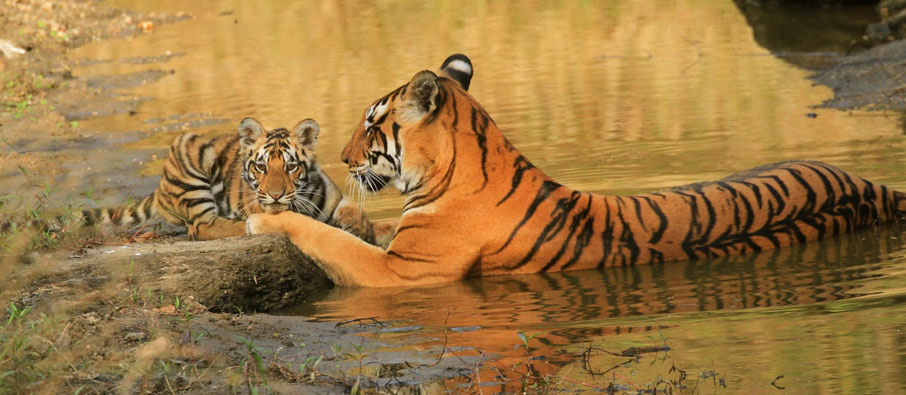In-Depth Analysis of the Recent Tiger Census in India (2022-2023)

India is a home to nearly 75% of the world's wild tigers and has shown a steady increase in its tiger population as revealed by the All India Tiger Estimation 2022 report. The latest census highlights significant successes and emerging challenges in tiger conservation efforts which make India one of the most visited wildlife destination in the world.
Here’s Key Findings from the 2022 Census
Tiger Population Growth: The estimated minimum tiger population is around 3,167 (from camera-trapped data). The upper estimate places the population at 3,925 with an average estimate of 3,682 tigers. This reflects a 6.1% annual growth rate showcasing the effectiveness of conservation initiatives.
The highest number of tigers is found in Madhya Pradesh (785), followed by Karnataka (563), Uttarakhand (560) and Maharashtra (444).
The Corbett Tiger Reserve has the highest number within a single reserve (260 tigers), followed by Bandipur (150) and Nagarhole (141). Central India and the Shivalik Hills-Gangetic Plains have seen the most significant increases in tiger numbers.
Declines in tiger populations have been noted in the Western Ghats highlighting the need for targeted conservation efforts. States such as Mizoram, Nagaland, Jharkhand, Goa, Chhattisgarh and Arunachal Pradesh report low and declining tiger numbers. Experts have expressed concerns about habitat fragmentation, poaching and human-wildlife conflict in these areas
Tadoba Tiger Reserve: A Case Study in Protection and Saturation
A separate 2023 survey of Tadoba Andhari Tiger Reserve (TATR) in Maharashtra provides insights into preservation success and the challenges of habitat saturation:
The tiger population in Tadoba National Park and its buffer zone has increased from 15 in 2010 to 93 in 2023, marking a six-fold increase. Overcrowding and habitat pressure have led to increased territorial conflicts and human-animal encounters. Solutions like translocation of tigers and better buffer zone management are being considered to ease population pressure
Despite the overall growth in numbers, several key challenges remain:
Tigers straying outside protected areas increase encounters with human settlements which is called Human- Wildlife Conflict. Expanding human activities, deforestation and mining threaten tiger corridors has led to the fast habitat degradation. Although anti-poaching measures have improved, illegal hunting still poses a risk. Poaching and illegal wildlife trade has bounced n number of times in the recent times.
While in conclusion we can say that India’s tiger conservation efforts under Project Tiger have led to a remarkable resurgence in the species' population. However, localized declines habitat constraints and human-animal conflicts need urgent attention. The 2022-2023 census serves as both a milestone and a reminder of the continuous efforts required to safeguard India’s national animals and for future generations.